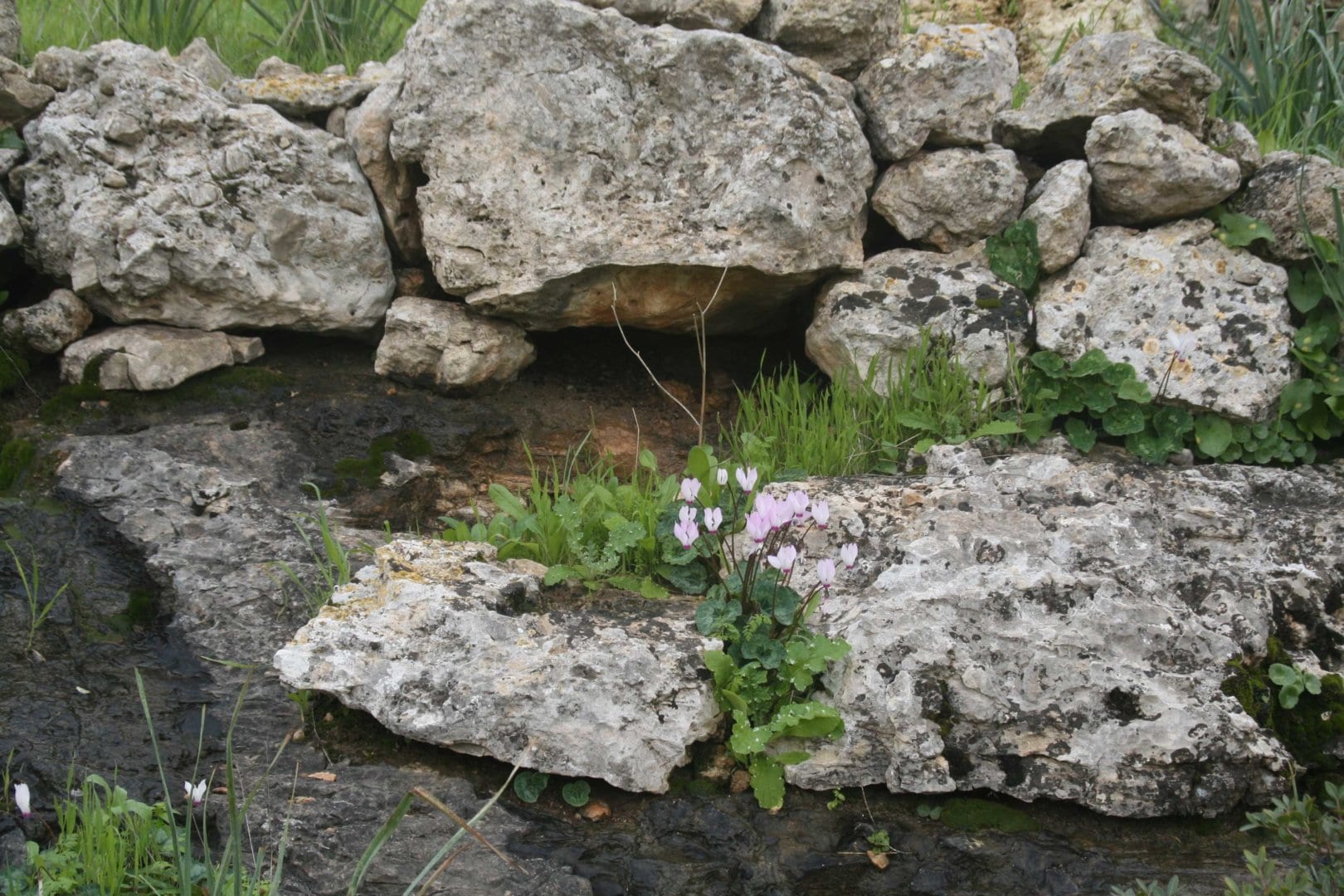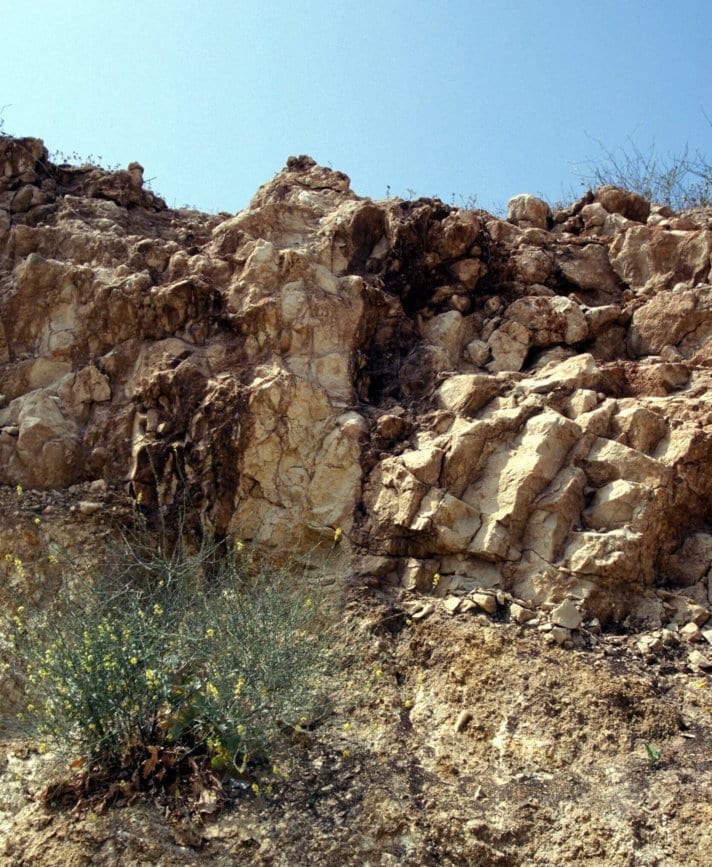The rocks of Mount Carmel are mainly dolomites, limestones, chalk, and marls from the Albian-Turonian Judea Group.
Lateral facies changes and extensive volcanics are typical to this Carmel section.
At Ramat Hanadiv, three formations have been mapped:
“Zichron formation”: dolomite and dolomitised barrier reef
“Shefeya volcanics”: volcanic, marly tuff
“Shune formation”: dolomite, limestone
East and south of Ramat Hanadiv, the Judea Group is uncomformably overlaid by chalk and marl from the
Senonian – Eocene “Mt. Scopus” and “Avdat” Groups.
West of Ramat Hanadiv, the Judea Group dolomite and limestones are uncomformably overlaid by the Pleistocene calcitic sandstone of the “Kurkar” group.
The Southern Carmel ridge is a north-south directed anticline of which only the eastern side is exposed.




